I’m working on new EQ project and I’m really interested in the differences between different equalizer types and does it really analog EQ can be better than digital one?
Imagine, you have to cut 2 frequencies from your track and you found 2 sweet spots for peaking cut filters.
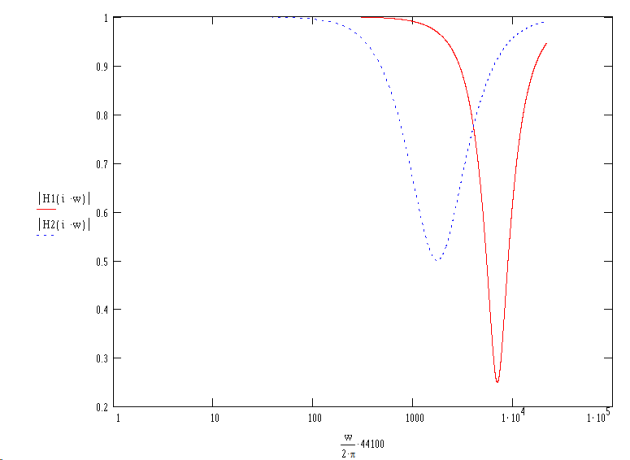
What does your final frequency response should like? Most equalizers just sum your curves and you’ll have the result. Also don’t forget that for min-phase equalizers case the phase response of both curves also affects the result.
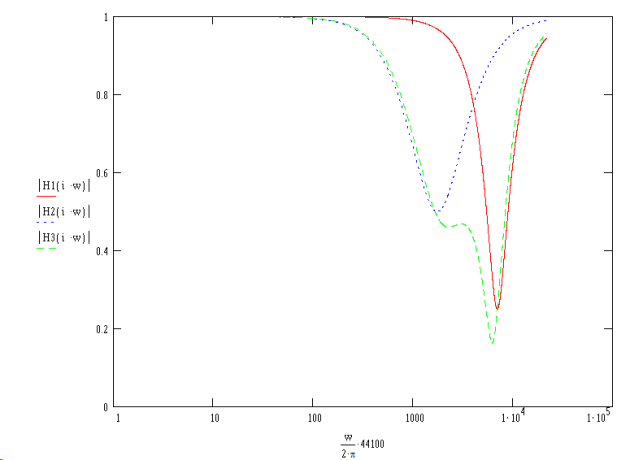
Green line is your final response. It is not what you’re expected! You spent a lot of time to find 2 sweet spots but as you can see that blue curve distorts red curve and vice versa and your sweet spots were shifted in frequency and in gain value. You should adjust red and blue curves again to return to your initial sweet spots, which is not good. This is how most min-phase equalizers work.
Now check the quote from this paper: [The Evolution of an EQ Design]
“(…) the only reason that I could see to use a topology using series connected EQ sections is to make their transfer functions additive. What does that mean? It means that if one were to make all the sections of an EQ design have the same frequency range, and then set each section to the same frequency and gain setting, they would add. If you boosted 1 KHz by 6 dB in each of 4 sections, the result would be 24 dB of gain boost at 1 KHz. (…)”
I suppose you’re familiar with such thing as “passive EQ”. Why they’re so great? I can suspect, because their transfer function is not additive. In passive EQ design our red and blue curves will lead to such final response:
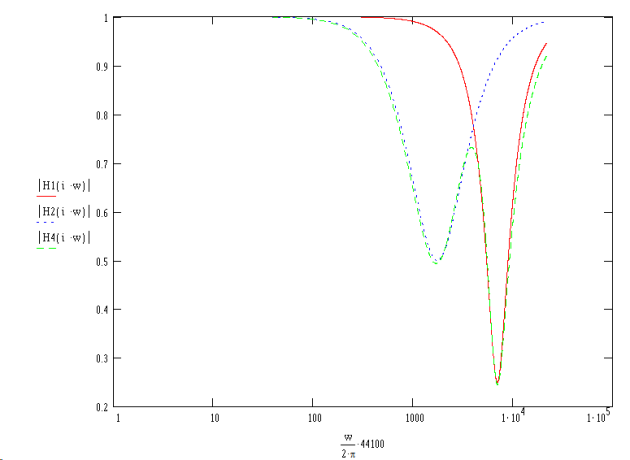
It is very close to sweet spots we had, isn’t it?
Now check additive (red) and not-additive (blue) curves isolated:
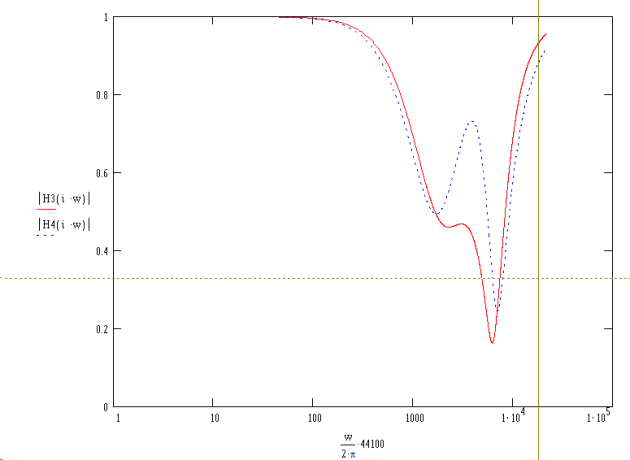
And all curves together:
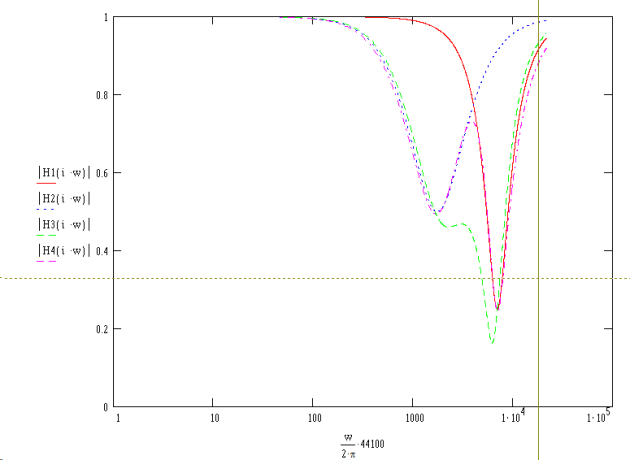
That’s why additive min-phase equalizers are very hard to tune right without proper frequency response graph, because each band affects each band. For non-additive equalizers it should be very simple to tune them by ear.
I can suggest that the right way to simplify the usage of additive equalizers is to calculate frequency and gain shift caused by band overlaps and to automatically compensate them.
This shift was caused by phase response overlaps but what do I think about linear phase equalizers then? Bob Katz in his mastering book wrote that linear phase equalizers have more analog sound. I think their predictable overlap of bands is one of the reasons of such statement. Unfortunately, they have great latency and due to that their usage is limited. I don’t choose linear phase for my EQ design. At least for now…





I’m sure it wouldn’t be trivial effort, but could you give the user the ability to switch back and forth between modes (via a “Lin” button for example)? Either globally across all bands or on a per band basis? Like you said it can be resource intensive, so a “processing” indicator while switching modes would be decent enough dialog if there’s any wait.
that’s a very interesting idea actually, I don’t think I’ve ever seen an EQ plugin with Linear/Non linear phase selectable for each band. Would be no doubt VERY COOL and UNIQUE, and put everything together into one EQ, since most of the times, you end up using two EQs for e.g. min-phase reduction of low freqs and linear phase gain of high freq.
on the passive/push pull EQ emulations in VST world = too many Pultec look-alikes and very few that actually sound good.
thanks vladg for this great post.
Hmm, that’s really interesting idea! For example, 256 samples of latency is what I can live with. For a given band, given freq. and given Q I can calculate the length of impulse response. If it fits in 256 samples (for example), green light is appear, you push the button and wow, you work in linear-phase mode! But if you move freq. or Q for the band out of this “green range”, the band become min-phase!
YAY! I’m happy to contribute at least one good idea today! 🙂 There are so many EQ’s out there, a feature like these would really set a product apart from the pack.
there you go vladg!
as a user, I wouldn’t worry at all about the latency – 256 samples is fine, 512 is actually pretty common too, and more can be expected out of a “mastering” plugin, such as a linear phase EQ or limiter. I don’t think anyone does tracking with linear phase EQs (…???? wtf?!!)
On top of that, most DAW have ADC or APC nowadays, so that’s no problem at all. I guess the important thing is that the plugin internally compensates for the different sample delay when working with linear phase AND non-linear phase bands at the same time.
Vladg! Will you make an EQ? I hope you will get an unique sounding eq like molot!
Great idea! I can’t wait till you unleashed that!
…and that would be awesome, if you make that with unique shaped curve. asymmetrical bell-shaped curve would be noticeable for all musical application industry…
Hi,
To me, what makes analog equalizers so good, is their circuitry. Subtle saturation/color that makes a big difference while being used on multiple tracks or the master buss.
Something with top-class in/out transformers, and a premium tube stage for the amp.
I know it’s hard to code nice sounding tube/transformers algorithms, but it’s possible. That the kind of feature that would make me jump spend money on a new EQ.